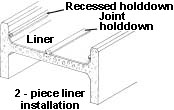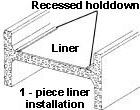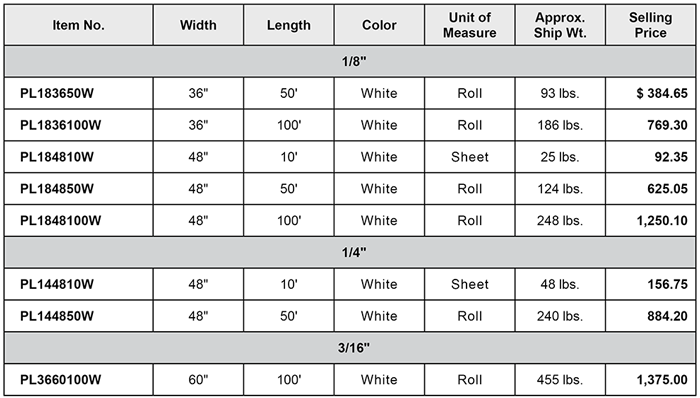POLY LINER
Feed Bunks


Note: Installations illustrated with poly holddowns. However, some budget buyers simply unroll liner over limed feed-bunk floor; allowing curved, outside surface of roll to face up toward ceiling. They report that after several days, the weight of the feed sitting on top of the curved-liner surface, plus the pressure of the cows pushing down on the liner as they eat, plus the suction created between the limed floor and the underside of the liner, will level liner so it's flat. They also note that the edges of the liner bite into the cement, preventing feed from creeping under the liner (on flat installations).
- Protects feeding surface... eliminates need to chip out and replace cement at regular intervals
- Cows will eat more, especially in summer (pitted feed-bunks promote mold and buildup of spoiled feed)
- Makes old feed-bunks better than new — extends life of new bunks
- White color — stays about 10° cooler than black outside... cooler on cows tongues
- 1/8" or 1/4" can be used (1/4" is stiffer and lays flatter, but is more difficult to bend). If 1/8" is used , fill in feed-bunk holes and rough spots with lime, sand or ready-to-mix concrete, to provide flat underlying support
- If poly holddowns used, install like manger liner. First, install joint holddown (if required), then liner, then recessed holddown. (See manger-liner "installation instructions". However, because of wider outside temperature changes, do not butt ends of poly holddowns together... allow for expansion.)

